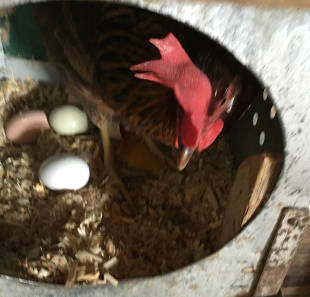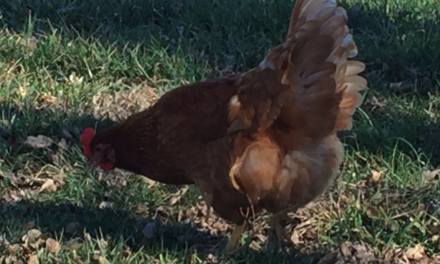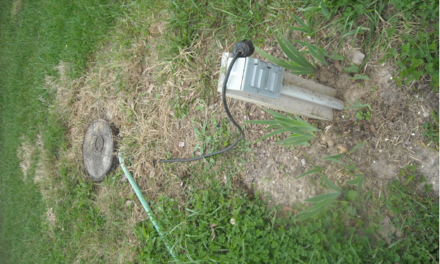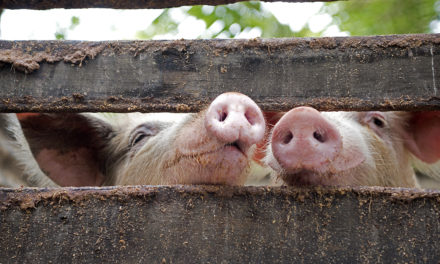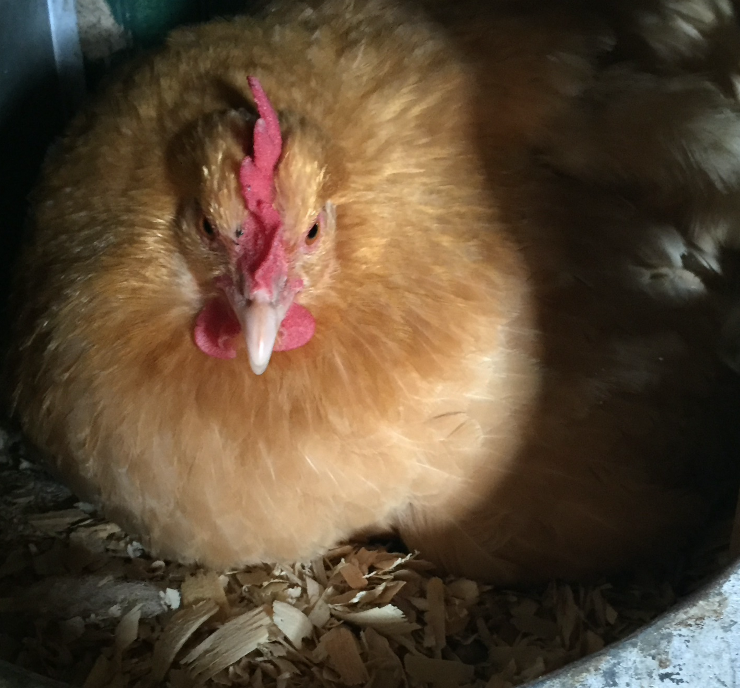
This hen has gone broody. It means she is going to stay on this clutch of eggs and not move until she hatches out baby chicks. See the glazed fixed expression in her eyes? Nothing will force her off her brood. Going broody should be a natural part of most hens’ lives. Unfortunately, hens not going broody stop laying eggs for at least three weeks and often longer as she nurtures her new chicks. Most large egg productions would shut down if all their hens decided to go broody in spring, so that God-given trait has been selectively bred out of most breeds.
What are some of the signs that your hen may be ready to set some eggs? The glazed fixed expression and not wanting to leave the nesting box are just a couple. If she is a free-ranging gal, she might just disappear and return with the chicks in tow.
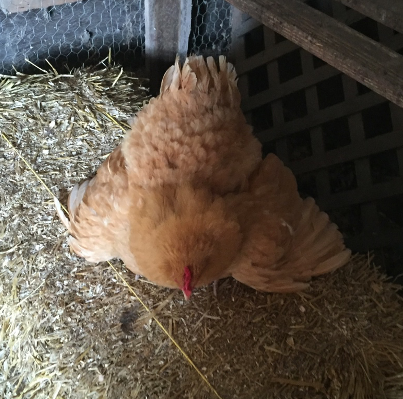
When a hen is broody and you take her off her nest, she will not move of run and all her feathers will rise up. “Now, don’t get your shackles up” is an old farm expression that comes from chickens. If you remove her from the nest and move her to a new location, if they are seriously broody, it will not break brood off that hen. So, now you are ready to set some fertilized eggs under that gal.
When one of my layers go broody and is able to maintain brood and hatch chicks, I consider them a treasure. “Mommy,” my broody hen, is a Buff Orpington, one of several breeds that are known for being good mothers. Silkie Bantams love to hatch eggs and many flocksters keep Silkies just for that purpose. In this post, I am going to share some of the mistakes commonly made when beginning to hatch out chicks.
Don’t try to leave a broody hen in with other layers. I left Mommy in the nesting box because I wanted to show what might happen to her eggs when she got off to get a drink. I left six eggs to set under her and when I checked on her that evening, several other hens had used her nest while Mommy got off to get a drink and laid more eggs in her nest. Now, I can’t tell which ones are the setting eggs that have already started developing and which ones are fresh eggs that will not hatch. The fresh ones will just turn rotten, explore and ruin all the eggs. If I had marked the eggs when I placed them under Mommy, I would know which eggs are which.

Another big problem is what happened next. Here came Rosie. This very curious Brown Leghorn got into Mommy’s nest and broke open one of the hatching eggs. If I had not been there to clean up the mess quickly before it got to the other eggs, all the eggs would have been ruined.
As you can see from the photos below, there was a viable embryo developing in the eggs that was cracked open.
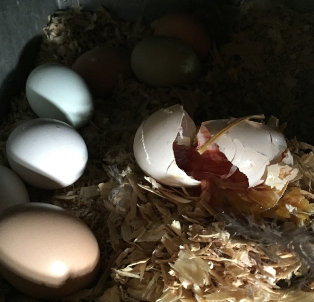
This is not the only reason that you want to separate the broody hen and her eggs. If you allow a hen to brood in the nesting box or even in a corner of the coop, if her eggs are unprotected, when they hatch the first thing the rest of the flock might do is eat them. I allowed a broody turkey hen to set on some hen eggs in a nest of fresh straw in the corner of my coop. Unfortunately, as soon as they hatched, my hens ate all the newborn chicks. It was heartbreaking. I learned an important lesson on poultry behavior in that the flock will protect itself from all perceived intruders, which is how they saw the newborn chicks.
It’s important to isolate the broody hen, but I like to keep her inside my large coop so that the rest of the flock can get acclimated to the new chicks as they grow. I encourage you to try raising some chicks with the help of a broody hen! It is an amazingly rewarding adventure. Be happy today! Anne May.

